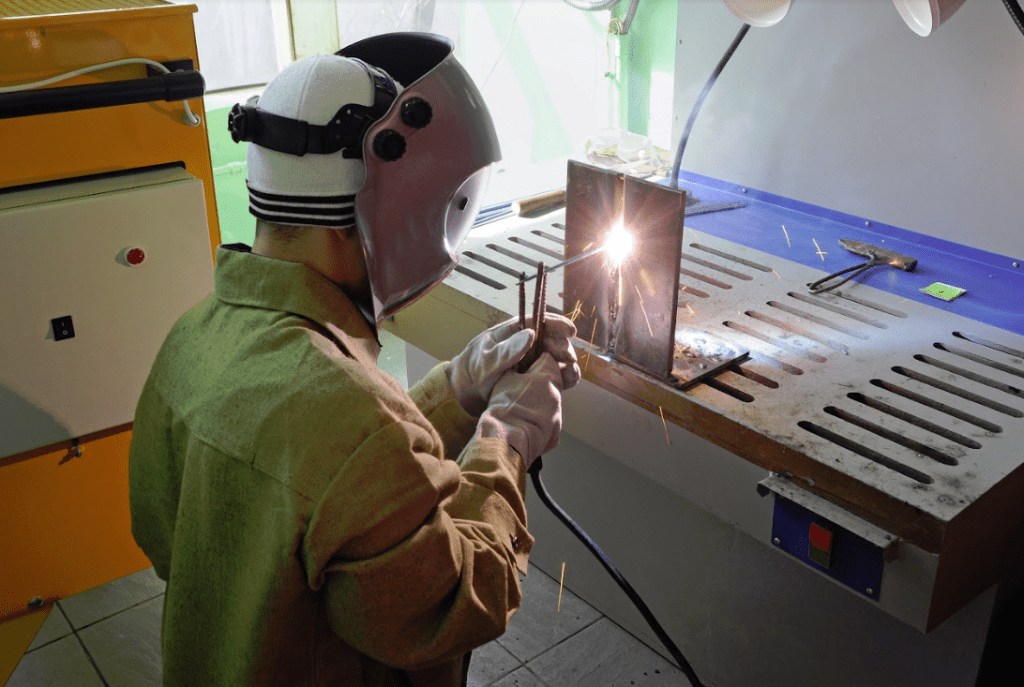A welding career can be very rewarding. Good pay, high job demand, and opportunities for advancement into robotics or management (or both.) But, it’s not a career you can just decide to start overnight. It takes specialized training, skill development, and certifications. So, we put together a list of schools, scholarships, and more to help you get started.
HOW TO START YOUR DREAM WELDING CAREER
Deciding your career path can be very nerve-wracking. With no prior experience or guidance, starting your welding career may seem overwhelming. But don’t worry, we’re here to help. Here are 4 steps to guide you to your preferred job in the welding field.
1. RESEARCH DIFFERENT WELDING PROGRAMS
Your first step will be to research welding programs, to eventually enroll in a welding program. Top-rated welding schools can be found from Alaska to Georgia, especially in areas of the country where welders are in the highest demand. To find the right school for you, do a little research to figure out which one best serves your end career goal. Take a look at the degrees and specialties offered, regional accreditation, and relationships with local businesses that hire graduates. Make sure you’ll get mostly real-world education that’s up to current standards, and look for included certifications.
2. EVALUATE TUITION AND FEES ACROSS THE PROGRAMS YOU RESEARCHED
The next step is to weigh your financial options. It’s no secret that money will likely be a determining factor – if not the main one – in which school you choose. Tuition and fees range widely depending on the type of welding program you’re interested in, from a few thousand dollars for basic certification programs to near six figures for a bachelor’s degree.
3. COMPARE SCHOLARSHIPS AND OTHER RESOURCES
Next, you should search for a scholarship or take advantage of a related program. One of the upsides of choosing a welding degree is its high demand – many organizations with a vested interest in training skilled welders offer scholarships, grants, or other ways to help grow a talented workforce.
Scholarships vary in the amount awarded, grade-point average requirements, and eligibility. The American Welding Society offers its own scholarships as well as links and information to hundreds of others around the world. Most scholarships require a GED or high school diploma and acceptance to an accredited program. Keep careful track of deadlines since they can be any time during the year.
States also receive federal funding through the Workforce Investment Act to award grants to help build up a local workforce. For many areas, welding is high on the list of important positions. Start by contacting the Workforce Development Center in your state!
4. FINALLY, GET CERTIFIED!
The final step to your first welding job is to get certified, which proves that you can create quality, sturdy welds that meet your job’s code. If your school doesn’t include certification as part of its curriculum, several organizations offer testing. Certifications are as varied as the type of job and cost anywhere from as little as $25 to maintain a certified welder (CW) certification, to more than $1,000 for more specialized roles.
If an official welding school just isn’t an option for you, it’s possible to get certified using other methods. One popular option is to work under an experienced welder and learn through hands-on experience. And while certification is required for you to get paid work as a welder, how you get certified is based solely on if you can show up and adequately perform the responsibilities of the job position.
IS IT WORTH IT?
In a word, yes. The median pay for a welder in May 2017 was just under $20 per hour, and wages can be upwards of $25 per hour for specialized jobs in industries like electric or gas utilities. In addition, The Bureau of Labor Statics expects the field to grow by 6 percent through 2026.
KEEP UP WITH WELDING NEWS
At American Torch Tip, we pride ourselves in providing useful information and resources for those in the welding industry. After being in business for more than 80 years, American Torch Tip is fulfilling the mission we set out to accomplish by successfully designing and manufacturing thousands of industry-leading torches and consumables for welding, laser and plasma cutting, and thermal spraying.
A welding career can offer a lot of rewards, like good pay, high job demand, and opportunities for advancement. And if you’re interested in robotics or management, you can often combine those interests with welding to create an even more rewarding career.

Building, Design & Construction Magazine | The Choice of Industry Professionals





